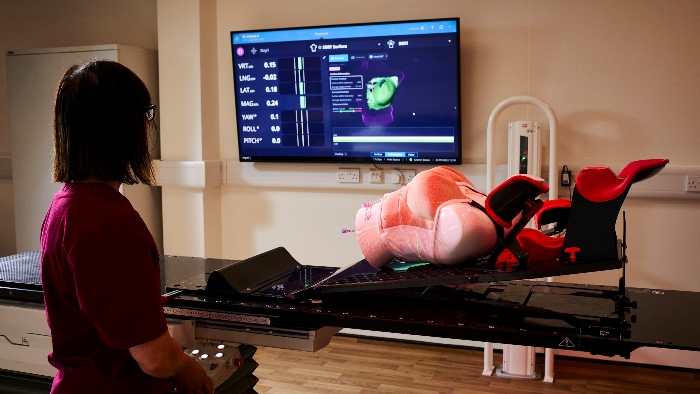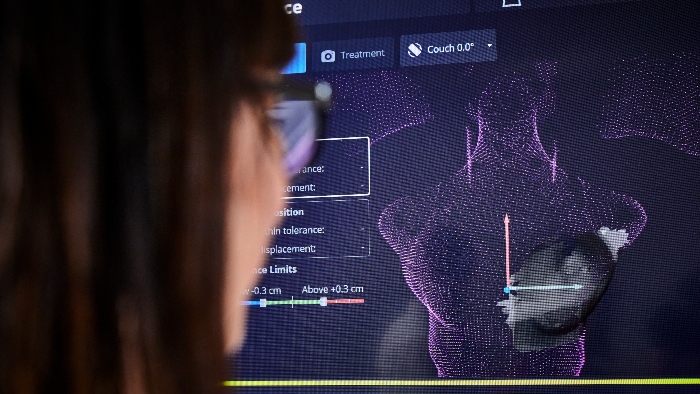The technique in action
The SuPPORT 4 All (S4A) bra is a new immobilisation device for breast cancer patients undergoing radiotherapy treatment.
It's designed to enhance the accuracy of breast positioning during radiotherapy, reduce the radiation dose to healthy organs, minimise radiation induced skin reactions, and preserve patient dignity and modesty.
Ahead of clinical testing, researchers used SMIC’s non-invasive 3D surface scanning technique to test the S4A bra on healthy volunteers.
This allowed them to confirm the accuracy and consistency of the bra and gave them confidence to move into testing it with real patients.
Leading to new developments
During the early stages of the project a series of co-design workshops were carried out with breast cancer patients and healthcare professionals involved in the planning and delivery of breast cancer radiotherapy.
In these workshops, we discovered some patients had experienced breast lymphoedema during and after radiotherapy. Patients found it difficult to communicate concerns about their changing breasts to the healthcare team. Clinicians were also concerned with how easily they would be able to detect radiation skin reactions in patients wearing the bra to their sessions.
To address these concerns, we developed two patient self reporting tools to allow patients to be more involved in their care and improve communication between patients and practitioners.
These tools were tested as part of the clinical feasibility trial for the support for all bra. Results showed that patients found the booklets useful, and easy to complete throughout their treatment.
We are now planning further developments to these tools to support patients using them during the radiotherapy phase of their breast cancer treatment.



